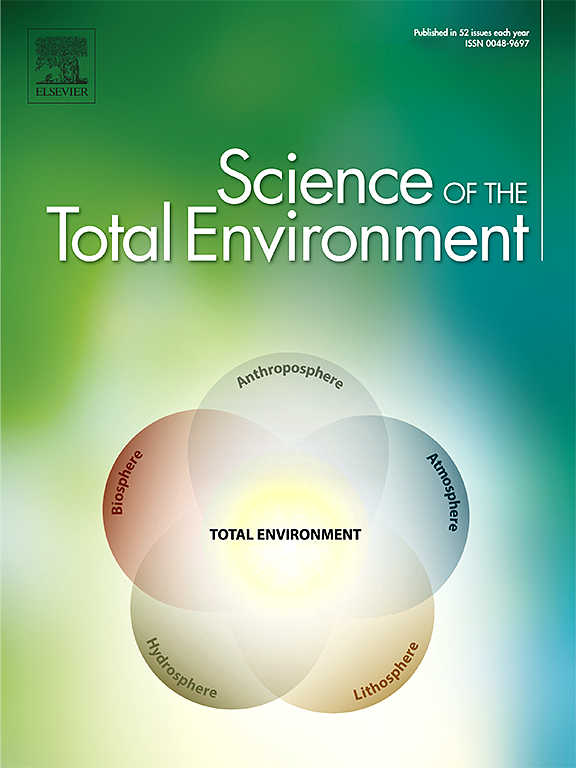Tidal-driven N2O emission is a stronger resister than CH4 to offset annual carbon sequestration in mangrove ecosystems
IF 8.2
1区 环境科学与生态学
Q1 ENVIRONMENTAL SCIENCES
引用次数: 0
Abstract
The mangrove ecosystems store a significant amount of “blue carbon” to mitigate global climate change, but also serve as hotspots for greenhouse gases (GHGs: CO2, CH4 and N2O) production. The CH4 and N2O emissions offset mangrove carbon benefits, however, the extent of this effect remains inadequately quantified. By applying the 36 h time-series observations and mapping cruises, here we investigated the spatial and temporal distribution of GHGs and their fluxes in Dongzhaigang (DZG) bay, the largest mangrove ecosystem in China, at tidal and monthly scales. The spatiotemporal variation of GHGs were mainly controlled by tidal-forced water mixing, outgassing and multiple biogeochemical processes. Tidal-driven porewater outwelling and sediment resuspension largely explained the excess addition of dissolved GHGs in tidal creeks. These lateral export combined with river input contribute significantly to surrounding water emission. Salinity controls CH4 emission in river-tidal creek-bay continuum, with concentration decreased by ∼100-fold from freshwater to seawater sites. N2O concentration was controlled by substrate supply for both nitrification and denitrification. Overall, the GHGs emissions in tidal creeks equal to 669–39,000 (7521 ± 6401) g CO2-eq/m2/yr (CO2 contributed ∼88–91 %) to atmosphere. In particular, CH4 and N2O contribute 8–366 (124 ± 78) g CO2-eq/m2/yr and 59–2260 (712 ± 525) g CO2-eq/m2/yr, together offsetting 8.7 ± 2.1 % of annual mangrove carbon sequestration, with a larger contribution from N2O (7.4 %). Our findings highlight the importance of simultaneous quantification of non-CO2 GHGs to accurately assess blue carbon capacity.

求助全文
约1分钟内获得全文
求助全文
来源期刊

Science of the Total Environment
环境科学-环境科学
CiteScore
17.60
自引率
10.20%
发文量
8726
审稿时长
2.4 months
期刊介绍:
The Science of the Total Environment is an international journal dedicated to scientific research on the environment and its interaction with humanity. It covers a wide range of disciplines and seeks to publish innovative, hypothesis-driven, and impactful research that explores the entire environment, including the atmosphere, lithosphere, hydrosphere, biosphere, and anthroposphere.
The journal's updated Aims & Scope emphasizes the importance of interdisciplinary environmental research with broad impact. Priority is given to studies that advance fundamental understanding and explore the interconnectedness of multiple environmental spheres. Field studies are preferred, while laboratory experiments must demonstrate significant methodological advancements or mechanistic insights with direct relevance to the environment.
 求助内容:
求助内容: 应助结果提醒方式:
应助结果提醒方式:


